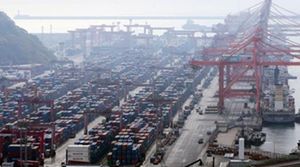Large swaths of New England are now facing an unusual predicament: water restrictions brought on by rare drought conditions, a scenario not often seen in this typically lush region. As of October 5, 2025, the situation has become pressing enough that local governments are rolling out measures to conserve dwindling water supplies, leaving residents and officials alike scrambling to adapt.
The heart of the crisis lies in Massachusetts, where the drought is hitting especially hard. According to NPR, meteorologist Ken Mahan of the Boston Globe has been closely monitoring the situation. In a recent conversation with NPR's Ayesha Rascoe, Mahan laid out the stark reality facing the state. "We’re seeing conditions we haven’t experienced in years," he explained, emphasizing just how rare this level of drought is for Massachusetts and the broader New England region.
Historically, New England is known for its ample rainfall and verdant landscapes. But this year, the weather has taken a dramatic turn. Rainfall totals have plummeted well below average, with some areas experiencing the driest stretch in over a decade. The result? Rivers are running low, reservoirs are shrinking, and local officials are sounding the alarm.
"Large parts of New England are facing water restrictions due to rare drought conditions," reported NPR, underscoring the breadth of the crisis. These restrictions aren’t just a matter of turning off the sprinkler or skipping a car wash. In some towns, residents are being asked to limit all non-essential water use, from watering lawns to filling swimming pools. Municipalities are even urging people to take shorter showers and hold off on washing their cars—small sacrifices that, collectively, could make a difference.
The drought’s impact is being felt far beyond residential neighborhoods. Farmers, who rely on steady rainfall to nourish their crops, are facing tough choices about which fields to irrigate and which to let go fallow. Local businesses that depend on water—think car washes, nurseries, and even some restaurants—are bracing for lean months ahead. And for wildlife, the lack of water can be a matter of survival, as streams and ponds dry up, threatening habitats and food sources.
Ken Mahan, the Boston Globe meteorologist, offered some insight into the climate patterns behind the drought. "It’s not just a matter of a few dry weeks," he told NPR. "We’ve had a persistent high-pressure system parked over the region, deflecting rainstorms and keeping things dry for much longer than usual." This weather pattern, he noted, is reminiscent of drought cycles seen in other parts of the country, but it’s a relative rarity for New England.
That rarity is part of what makes the current situation so jarring. In a region where water has long been taken for granted, the sudden shift to scarcity is forcing a cultural adjustment. Local news outlets, including the Boston Globe, have been publishing tips on water conservation and updates on which towns are enacting new restrictions. Community meetings are being held to discuss the drought’s impact and brainstorm ways to stretch the region’s water resources.
For some residents, the new rules are an inconvenience. For others, especially those with wells or small farms, the stakes are much higher. "We’re rationing water for the first time since I can remember," said one Massachusetts farmer, speaking to local reporters. "If the rain doesn’t come soon, we could lose a big part of our harvest." It’s a sentiment echoed by many across the state, as the drought drags on with no clear end in sight.
According to NPR, the water restrictions are being implemented in phases, depending on the severity of local conditions. In some communities, the measures are voluntary—residents are asked, not required, to cut back. In others, the restrictions carry penalties for non-compliance, with fines levied against those who ignore the rules. Town officials are hoping that a combination of public education and enforcement will help conserve enough water to get through the dry spell.
But the drought is also sparking broader conversations about climate resilience and preparedness. While this year’s dry conditions are unusual, experts warn that they could become more common as climate patterns shift. Ken Mahan cautioned, "We can’t assume that what’s happening now is just a fluke. With climate change, these sorts of extreme weather events are likely to become more frequent." It’s a sobering thought for a region that has long enjoyed relative climate stability.
Local governments are already looking at long-term solutions. Some towns are exploring investments in more robust water infrastructure, such as new reservoirs or upgraded treatment plants. Others are considering stricter building codes to reduce water usage in new developments. And there’s a renewed push for public education campaigns, aimed at making water conservation a permanent part of life in New England—drought or no drought.
Residents, for their part, are adapting in creative ways. Community gardens are switching to drought-resistant plants, and some schools have started teaching students about water conservation. Social media is awash with tips for saving water at home, from fixing leaky faucets to collecting rainwater for gardens. It’s a grassroots response to a crisis that, for many, still feels surreal.
As the dry spell continues, meteorologists like Ken Mahan are keeping a close eye on the forecast. While there’s hope that autumn rains could bring relief, the outlook remains uncertain. "We’re all hoping for a change in the weather pattern," Mahan said, "but for now, everyone needs to do their part."
The drought of 2025 may be a rare event for New England, but it’s proving to be a wake-up call. Water, once taken for granted, is now front and center in the minds of residents and officials alike. Whether this dry spell will be remembered as an anomaly or the start of a new normal remains to be seen. For now, the message is clear: conserve, adapt, and hope for rain.




